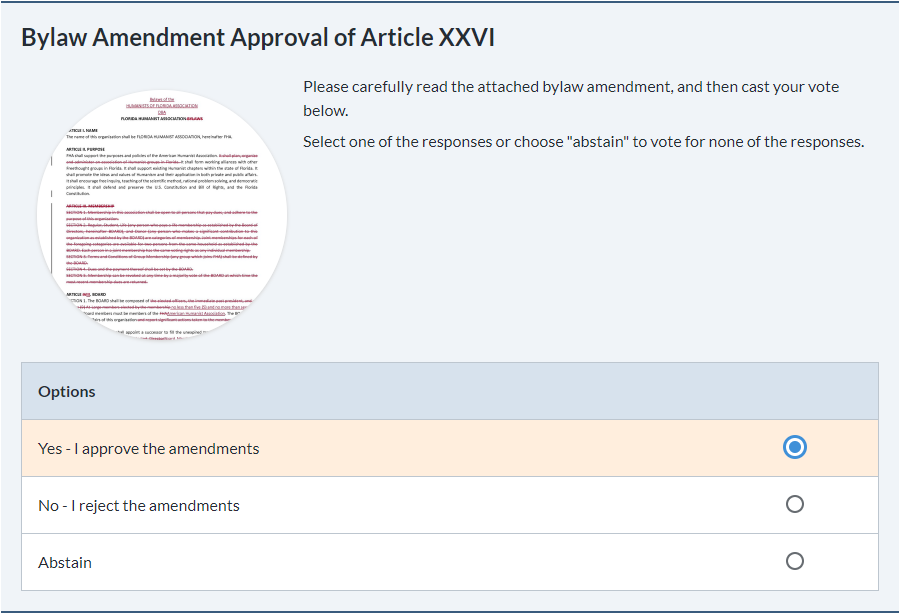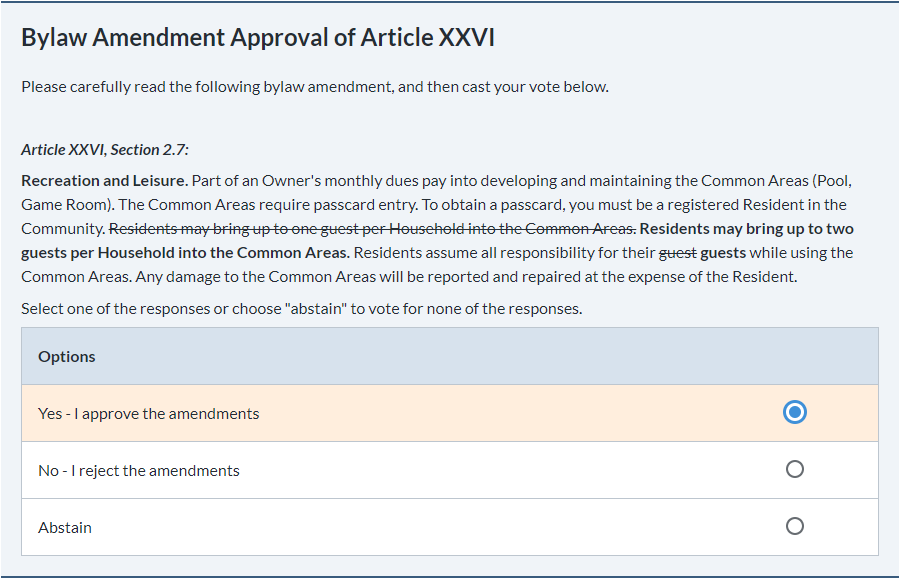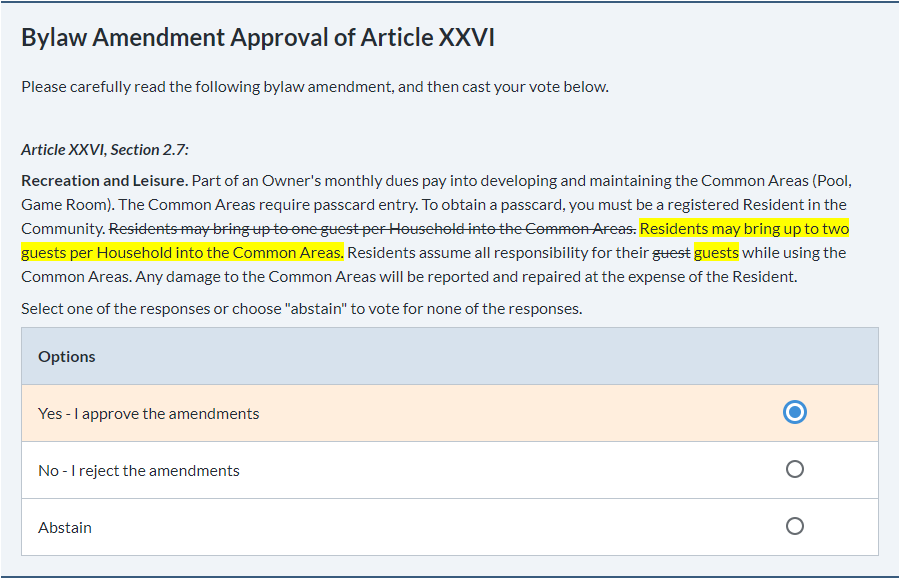What is a Bylaw Amendment?
Bylaws are the detailed governing rules for an organization. They are unique to each organization, although similar types of organizations can have similar bylaws. The bylaws outline processes and operating procedures for an organization. Requirements for what bylaws must address differ based on provincial/state law — they can vary greatly, from very specific requirements to things as general as, “bylaws must contain the provisions for managing the business of the organization.”
Like any other set of rules, bylaws need to be reviewed and updated periodically to prevent them from having out-of-date concepts. Therefore, an important process that all bylaws need to explain is the process for amending the bylaws.
One of the most important things a bylaw amendment process will outline is the number of votes required to make the bylaw amendment valid. It is common for bylaw amendments to require at least a ⅔ majority to be passed, and if at least ⅓ of the voting membership disagrees with the amendment, it should not be passed. Although this may seem like a very high number of approval votes required (or a very low amount of disapproval votes required) to pass or not pass the bylaw amendment, there is good reasoning for it. Because the bylaws are an agreement as to how an organization will be run, amending them amends the agreement that everyone has already agreed to, so it is important that the changes are clear and that most people are on-board with the changes.
Bylaw amendments must contain three important pieces of information when being proposed to the membership:

- The intended amendment.
- The current bylaw.
- The way the bylaw will read if the amendment were to be adopted.
This allows your membership to have all the information necessary to make an informed decision on whether the bylaw amendment works for them or not.
Possible Voting Methods for a Bylaw Amendment

ElectionBuddy’s plurality voting method is perfect for any “Yes”/”No” question that you want to propose to your membership, so it works perfectly for a bylaw amendment. Additionally, ElectionBuddy offers flexibility when it comes to deciding how to convey the bylaw amendment (i.e. the three important pieces of information that the amendment should include).
Bylaw amendments typically are formatted to better illustrate what is being removed from the bylaws, what is being added, and how the new bylaw will read, should it be set in motion. Formatting can be done onto the bylaws in an external document and uploaded to the ballot, or the bylaw can be typed out and edited directly on the ballot.

Common Ballot Features Used in Bylaw Amendments
Common features used when building a ballot for a Bylaw Amendment include:
- The “Abstain” option, which allows for voters to abstain from voting on the Bylaw Amendment ballot question.
- The Additional Question Information section, which will allow you to include text relevant to the Bylaw Amendment. This is also the area where you can upload a file, such as a PDF file of the bylaw being amended.
- Text formatting allows you to bring clarity to your bylaw amendment by placing emphasis on what is being added and removed from the bylaw. This is particularly helpful if not uploading a PDF file of the bylaw!
- Asking for comments can be useful if looking to collect feedback or member questions/concerns about the amendments.